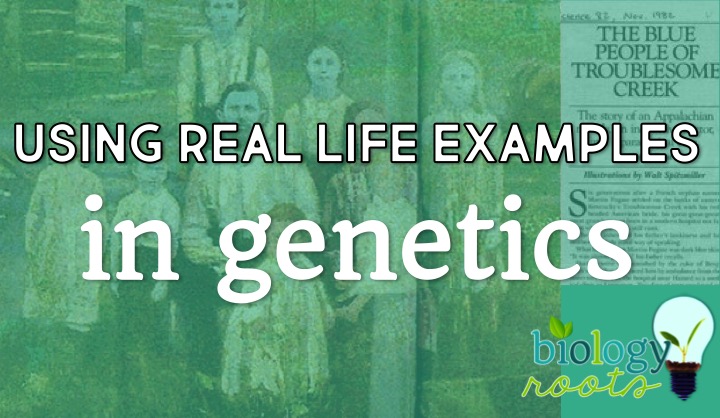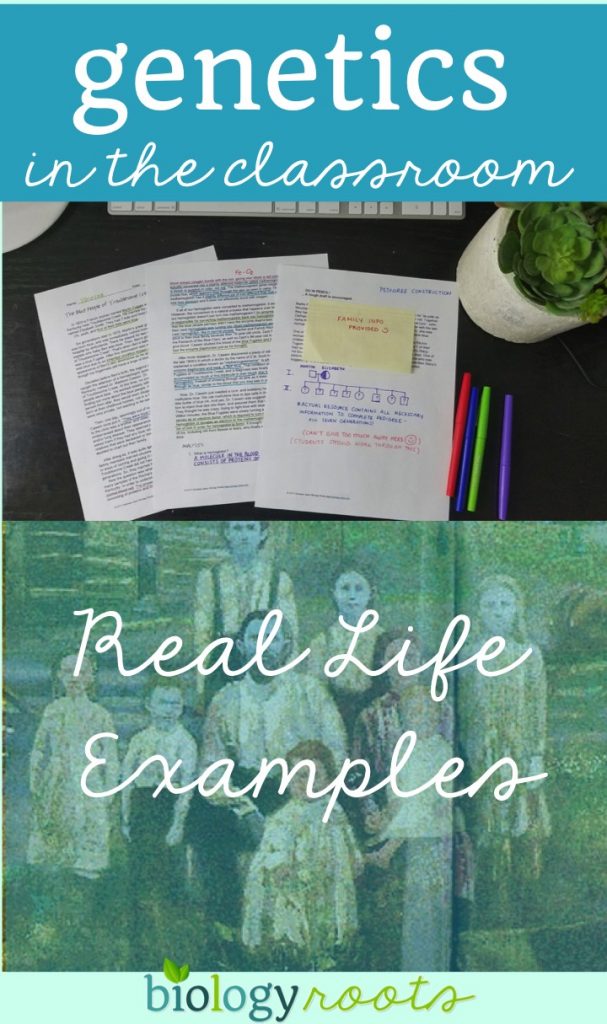Genetics is one of my favorite units to teach! (I think I’ve already said that throughout my blog about 6 times…. or 57. I lost count.)
I love pulling in real life examples into every aspect of biology class, simply because it makes things more interesting.
But let’s face it, some things are more interesting than others.
When I first heard the story of the blue people that lived in Kentucky, I was already in my fifth year of teaching. The first thing I asked myself (after I confirmed that it was real) was how the heck have I not heard of this before? After all, genetics is my favorite unit to teach!
After some further research I discovered it was a genetic condition, and I knew I had to incorporate it into my classroom somehow.
In a nutshell: The blue is caused by a hereditary condition called methemoglobinemia. It is a rare and harmless genetic disorder in which the body does not make enough of the enzyme diaphorase (or any). Those with methemoglobinemia still have plenty of hemoglobin, so they function normally. If you don’t have methemoglobinemia (and if you’re reading this, chances are you don’t), you also have a compound in your blood called methemoglobin. But, because you make the enzyme diaphorase, the methemoglobin your body does not build up like it does with those who have methemoglobinemia; it converts back into hemoglobin, giving your blood that nice reddish color and can cause your skin to look pinkish depending on your skin tone. Those with methemoglobinemia who lack the diaphorase enzyme are unable to convert it back to hemoglobin in a timely manner, giving their blood a deep purple color – enough to cause their skin to appear blue!
What’s even more fascinating is that there was a family in Kentucky named the Fugates that were known as the “Blue Fugates”. Due to lack of transportation, the Fugates were often inbred by marrying their cousins. They kept to themselves in the hills of Troublesome Creek and were the stuff legends are made of; with their rural location far from hospitals and other signs of civilization, they were barely seen by outsiders.
I absolutely love incorporating this wonderful genetics story into my genetics unit. The kids’ reactions are hilarious, but furthermore it really piques their interests!
Every year the kids be like…
I encourage you to also share this story with your budding scientists. After spending hours of research I’ve put together a pedigree activity for the kids to do. They really enjoy it!- and they’re learning (shhhh- don’t tell them). The pedigree activity is paired with a PowerPoint presentation to recap the family and the science behind methemoglobinemia and help finalize the facts and legend.
(Some of the names in the family pedigree have been changed to encourage students to solve the pedigree on their own).
If you’d like access to the one pictured above, you can grab the resource from my TpT store: Blue People of Troublesome Creek Pedigree Practice (paid resource).
If you’d like to explore more about using this-real life example of the Blue Fugate family, some interesting articles can be found throughout the web, such as this one from All That Is Interesting.
Here are some real life genetics examples that you can use in your classroom:
-
Carriers of sickle cell anemia are resistant to malaria – great lesson to tie in with other parts of biology! The CDC offers information on malaria resistance for those that are heterozygous for sickle cell anemia.
-
Approximately 1% of caucasians are immune or resistant to HIV infection. This is a great one to come back to when teaching evolution; it’s thought that these caucasians are descendants of those that survived the plague.
-
Double the muscle mass; less fat; more strength: myostatin related muscle hypertrophy (“strong man disorder“)- this also piques interests and it’s a great discussion leading into protein synthesis (an example students can see and understand).
-
Epidermodysplasia Verricuformis – a genetic disorder of the immune system against HPV (the “tree man disease“). This is also another great one to tie into the immune system.
-
X-linked Genes: Hypertrichosis (Werewolf Syndrome)- a genetic mutation. Could it have benefits? You can tie it into evolution, too! Here’s a scientific article from NCBI on how it’s passed on.
-
Blue People of Troublesome Creek– everything you need to know above 🙂
What do you like to incorporate in the classroom? I’d love to hear. Contact me or leave a comment below!




